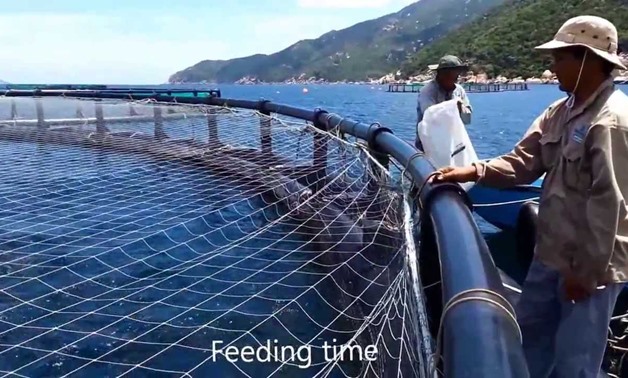
Marine Farms - CC
taean, South Korea – 11 September 2017:A scenic west coast region hit by South Korea's worst ever oil spill will be eligible for millions of dollars in disaster aid, a minister said on Monday.
Park Myung-Jae, the minister of government administration and home affairs vowed immediate aid of 5.9 billion won (R42.8 million) and said more state funds would be forthcoming soon.
But newspapers criticised what they called a slow response to the disaster, saying no lessons had been learned since the previous incident.
"Precious time was lost in preparing seaside communities for the impending ecological disaster," a Korea Herald editorial said.
"Equipment to contain the oil spill was not distributed promptly, leaving villagers helpless as they watched the oil move ashore."
The JoongAng Ilbo said it suspects "authorities tackled the accident in a loafing and idle manner."
As almost 9 000 people struggled to clean up the huge slick, officials said the spill could deal a heavy blow to tourism and oyster and abalone farms in the area.
Cho Kyu-Sung, a Taean county official, told AFP that the slick had hit 160 marine farms so far and was still spreading, with a total of 445 farms in the coastal area under threat.
"At this stage, it's difficult to estimate the direct and indirect damage. The damage will be enormous if you include long-term environmental expenses," he added.
Park said the area would be declared a disaster zone during a visit to the fouled beaches, where soldiers, police, volunteers and residents worked with shovels and buckets to try to clear the oil.
The designation makes four townships in Taean county eligible for subsidies and compensation.
About 10 500 tons of crude oil leaked into the Yellow Sea when a drifting barge smashed into an oil tanker on Friday.
Some 140 ships and five planes were helping, but the Coast Guard said the slick has already hit 50 kilometres of coastline. More was expected to come ashore.
"Most of the crude oil left on the water will likely float onto the Mallipo or Cheollipo beaches as the northwest wind is expected to blow for two to three more days," an official at the maritime affairs and fisheries ministry told Yonhap news agency.
The slick has already reached the mouth of Garorimman Bay, the country's largest fish farming area, Yonhap said.
The barge, carrying a construction crane, slammed into the 147 000-ton Hong Kong-registered Hebei Spirit tanker after its cable to a tug snapped in rough seas 90 kilometres southwest of Seoul.
Newspapers and maritime officials reported difficulties contacting the tug captain to warn him of the imminent danger.
The Korea Times said the maritime officials tried twice to alert the crew that the barge was too close to the tanker, but could not make radio contact.
A maritime official in Taean told AFP on condition of anonymity that they had been forced to send a text message to the tug captain's mobile phone.
The crane punctured three of the five oil containers on the tanker, which was anchored eight kilometres off the coast, and the leak was only completely stopped early Sunday.
The oil spill is about twice the size of South Korea's previous worst such case in 1995.
Maritime Minister Kang Moo-Hyun said Sunday he estimated the clean-up would take "at least two months" given the size of the slick.
He told reporters there was serious contamination along 17 to 20 kilometres of coastline, with the oil sludge either glued onto beaches or sinking to the seabed.
On the beaches, police, troops and volunteers carried buckets of sludge to huge rubber pools from which they scooped black oily sand into sacks.
This stretch of coastline is one of Asia's largest wetland areas, providing important habitat for migrating birds. - AFP

Comments
Leave a Comment